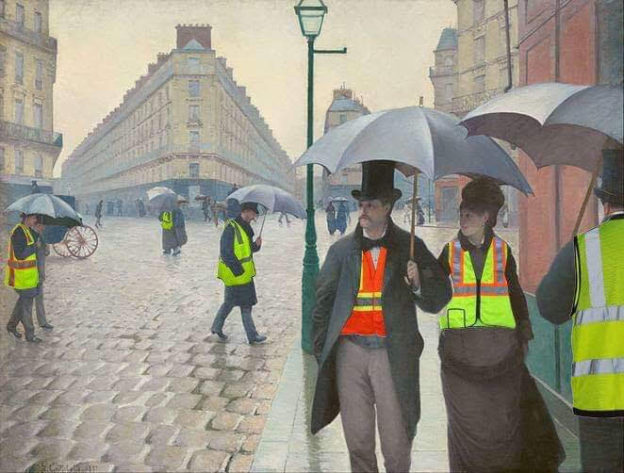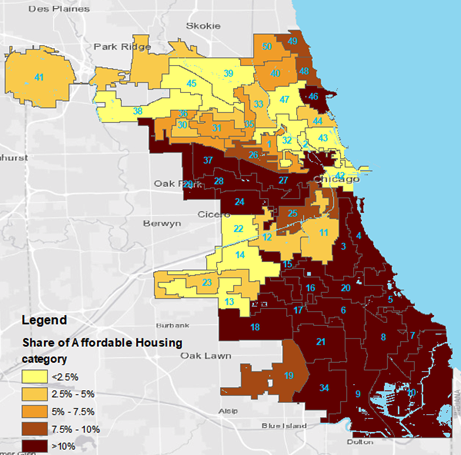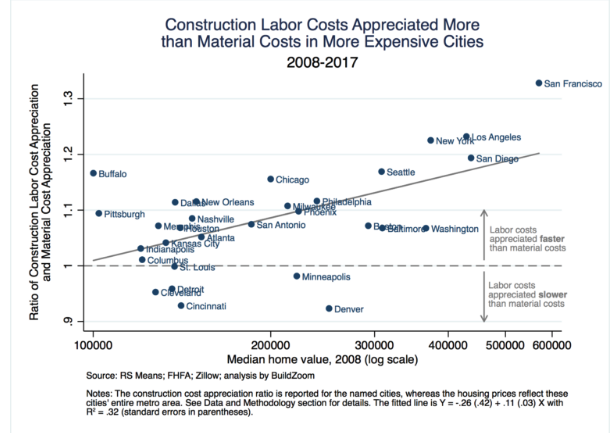What City Observatory did this week
1. The limits of Nieman Marcus environmentalism. It’s fashionable to demonstrate one’s green credibility by conspicuous acts of non-consumption, but framing our environmental problems as fundamentally those of personal or moral failures misses the point that we’ve set up a social and economic system that generates powerful incentives to pollute. The solution won’t be found in individual acts of contrition or self-abnegation, but rather in fundamental changes to laws and rules–like a carbon tax–that can achieve scale.
2. Where you can walk and buy local. We use City Observatory’s storefront index to show where there are walkable neighborhoods with mutually reinforcing clusters of customer-facing retail and service businesses in large metropolitan areas through the US. Local businesses tend to thrive, not in isolation, but when they’re located in close proximity to one-another, and where the activity associated with traveling from business to business on foot enlivens the area. This “sidewalk ballet” described by Jane Jacobs underpins the health of local business districts, something we can document visually with the Storefront Index.
Must read
1. Don Kostelec’s Twelve Days of Traffic Safety Myths. Much of the received wisdom about how to design and manage streets and roads, and how to think about safety is based on fictions that are as widespread and durable as Santa Claus. You’ll find a sharp, but well-informed debunking of claims about “Complete Streets” and “Vision Zero”–both slogans that have been watered down to near meaninglessness by highway engineers; a critique of the phony claim that 94 percent of crashes are due to human error; and perennial admonitions for pedestrians to assume “shared responsibility” for safety and done bright reflective clothing.
2. Cities are all about fighting climate change, except when it comes to long-term infrastructure decisions. The Transport Politic’s Yonah Freemark has an insightful analysis of Chicago’s plans to spend upwards of several billion dollars in the coming years to rebuild the city’s lakefront highway. In an article entitled “The politics of wishful thinking: American cities and their commitment to the expressway,” he notes that no serious thought is being given to eliminating Lakeshore Drive, even though it commits the city to decades of auto-dependent transport, makes city neighborhoods less livable, and cuts the city off from it’s signature environmental asset. Leaders like Mayor Rahm Emanuel profess fealty to the Paris Climate Accords, but when it comes to the big, expensive decisions that will shape the city for decades, almost no serious thought is given to moving away from an auto-dominated landscape.
3. How affordable housing reinforces economic and racial segregation. Chicago’s Metropolitan Planning Council has a compelling map and analysis of the location of the city’s formal affordable housing (public housing, plus units supported via housing vouchers and the Low Income Housing Tax Credit). The neighborhoods with the lowest shares of affordable housing tend to be much whiter (54 percent) and higher income (averaging $80,000 median family income or greater) than the neighobrhoods with the greatest concentrations of affordable housing (11 percent white, and average incomes of about $43,000).
New Knowledge
What’s behind rising construction costs? BuildZoom.com’s Issi Romem has a detailed analysis of how construction costs are changing in markets across the US. There are wide differences in construction costs across markets, and the big differentiator is labor costs. Materials costs are almost identical across metropolitan areas, but the most expensive markets have the most expensive construction labor. Moreover, the situation is worsening: labor costs have been rising faster in the highest cost markets.
As Romem points out, there are several self-reinforcing cycles at work here. Markets with expensive housing are expensive to live in, and very likely require firms to offer higher levels of pay in order to be able to attraction construction workers. Another way to look at this relationship is to imagine that in supply constrained markets, labor shares some of the economic rents that would otherwise go to landowners.
In the News
Bloomberg’s Noah Smith cited our analysis of the literature on the stability of newly integrated neighborhoods in his analysis of Minneapolis decision to legalize triplexes city-wide.
Reihan Salam quoted City Observatory’s Joe Cortright in his National Review article, “Portland Housing Policy: Turning NIMBYs into YIMBYs.”
Crain’s Cleveland Business reported on our ranking of metropolitan areas by their number of restaurants per capita, in “Cleveland’s restaurant boom may be important for progress.”





